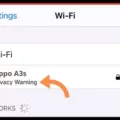An unstable internet connection can be a frustrating experience for anyone. It can cause video calls to drop, slow down the speed of downloads, and make browsing the web a tedious task. However, there are several ways to fix this issue and ensure a stable internet connection.
One of the first things to do is to check your network connection. A simple restart or unplugging of your modem and router can often solve the problem. This will reset the connection and eliminate any temporary glitches that may be causing the instability.
Another reason for an unstable internet connection can be bandwidth-hogging programs. These are applications that consume a lot of bandwidth, such as streaming services or file-sharing programs. By disabling these programs, you can free up bandwidth and improve the stability of your connection.
SIP ALG and QOS are two settings that can also cause an unstable connection. SIP ALG is a protocol that can interfere with VoIP calls, while QOS prioritizes certain types of traffic over others. Disabling these settings can help improve the stability of your internet connection.
Renewing your IP address can also help fix an unstable internet connection. This is because your IP address may have become outdated, causing the connection to become unstable. By renewing your IP address, you can ensure that your connection is up-to-date and stable.
Changing your DNS settings can also help improve the stability of your internet connection. DNS stands for Domain Name System and is responsible for converting domain names into IP addresses. By switching to a faster DNS server, you can improve the speed and stability of your internet connection.
An unstable internet connection can be a frustrating experience, but there are several ways to fix it. By checking your network connection, disabling bandwidth-hogging programs, disabling SIP ALG and QOS, renewing your IP address, and changing your DNS settings, you can ensure a stable internet connection.

Fixing an Unstable Internet Connection
To fix an unstable internet connection, there are several steps you can take.
1. Restart or unplug your modem and router: This is the first thing you should do to ensure you have a stable internet connection. Simply unplug both devices, wait a few seconds, and then plug them back in. This can help refresh your connection and clear any issues that may be causing instability.
2. Disable bandwidth-hogging programs: Some programs can consume a lot of bandwidth, slowing down your internet connection. To avoid this, close any programs that are not essential or are using a lot of bandwidth, such as file-sharing programs or video streaming services.
3. Disable SIP ALG and QoS: SIP ALG (Session Initiation Protocol Application Layer Gateway) and QoS (Quality of Service) are settings used to prioritize certain types of internet traffic. However, they can sometimes cause instability. Disabling them can help to stabilize your connection.
4. Renew your IP address: Your IP address is a unique identifier that your device uses to connect to the internet. Sometimes, renewing it can help to fix connectivity issues. You can do this by opening the command prompt on your computer and typing “ipconfig /release” followed by “ipconfig /renew”.
5. Change DNS settings: DNS (Domain Name System) is the system that translates website addresses into IP addresses. Sometimes, changing your DNS settings can help to improve your internet connection. You can change your DNS settings in your router or on your device. Some popular DNS providers include Google DNS and OpenDNS.
By following these steps, you should be able to stabilize your internet connection and enjoy faster, more reliable internet access.
Causes of Unstable Internet Connection
An unstable internet connection is often caused by wireless interference. This interference can be caused by a number of factors, but the two most common are frequency overlap and limited Wi-Fi channels.
Frequency overlap occurs when multiple devices are using the same frequency to transmit data, which can cause interference and lead to a slower internet connection. Limited Wi-Fi channels can also cause interference, as there are only a limited number of channels available for devices to use. When multiple devices are using the same channel, it can lead to congestion and slower speeds.
Other factors that can contribute to an unstable internet connection include distance from the router, physical obstacles like walls or furniture, outdated equipment, and network congestion. To improve your internet connection, it is important to ensure that your equipment is up to date, optimize your router settings, and minimize interference by reducing the number of devices using the same frequency or channel.
Conclusion
An unstable internet connection can be frustrating and can disrupt your work, entertainment, and communication. To ensure a stable internet connection, it is important to check your network connection, disable bandwidth-hogging programs, disable SIP ALG and QOS, renew your IP address, and change your DNS settings. Additionally, wireless interference can also cause unstable Wi-Fi, which can be resolved by addressing frequency overlap and limited Wi-Fi channels. By taking these steps, you can enjoy a reliable and stable internet connection, allowing you to stay connected and productive.








